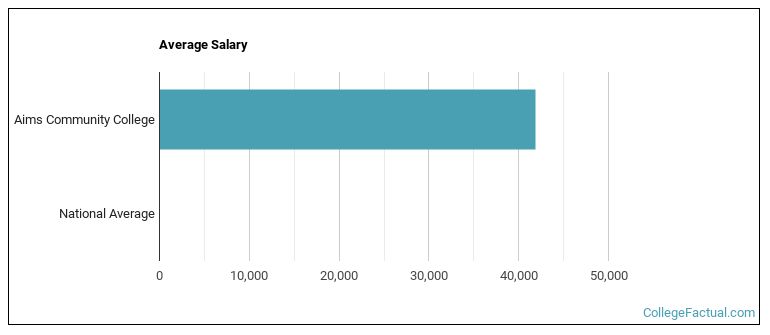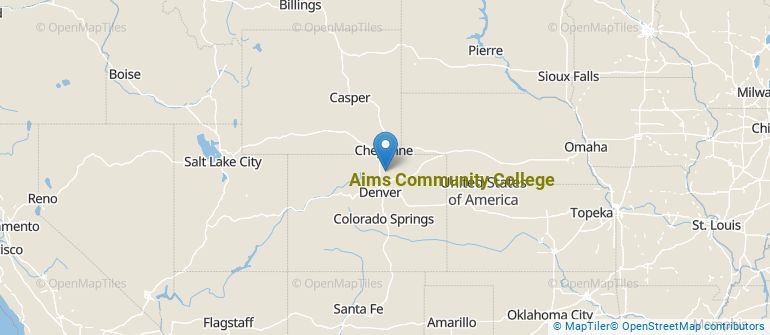 by our College Data Analytics Team
by our College Data Analytics TeamCollege Factual analyzes over 2,000 colleges and universities in its annual rankings and ranks them in a variety of ways, including most diverse, best overall quality, best for non-traditional students, and much more.
Aims Community College was awarded 12 badges in the 2025 rankings. The highest ranked major at the school is general studies.
Explore the best ranked schools for the programs you are most interested in.
Aims Community College is ranked #595 out of 2,152 schools in the nation for overall quality on College Factual's 2025 Best Colleges list. This is an improvement over the previous year, when Aims Community College held the #850 spot on the Best Overall Colleges list.
Aims Community College is also ranked #11 out of 31 schools in Colorado.
Since Aims Community College has an open admissions policy, being accepted to the school isn't that hard. However, a full basic things - such as a high school diploma or equivalent - may be required. Also, go over your application to make sure it is complete before you submit it.
The student to faculty ratio is often used to estimate how much interaction there is between professors and their students at a college or university. At Aims Community College, this ratio is 17 to 1, which is on par with the national average of 15 to 1. That's not bad at all.
Another measure that is often used to estimate how much access students will have to their professors is how many faculty members are full-time. The idea here is that part-time faculty tend to spend less time on campus, so they may not be as available to students as full-timers.
The full-time faculty percentage at Aims Community College is 100%. This is higher than the national average of 47%.
The freshmen retention rate is a sign of how many full-time students like a college or university well enough to come back for their sophomore year. At Aims Community College this rate is 58%, which is a bit lower than the national average of 68%.
During the 2017-2018 academic year, there were 5,981 undergraduates at Aims Community College with 1,707 being full-time and 4,274 being part-time.
| $0-30 K | $30K-48K | $48-75 | $75-110K | $110K + |
|---|---|---|---|---|
| $9,197 | $9,933 | $11,099 | $12,476 | $14,486 |
The net price is calculated by adding tuition, room, board and other costs and subtracting financial aid.Note that the net price is typically less than the published for a school. For more information on the sticker price of Aims Community College, see our tuition and fees and room and board pages.
It's not uncommon for college students to take out loans to pay for school. In fact, almost 66% of students nationwide depend at least partially on loans. At Aims Community College, approximately 8% of students took out student loans averaging $4,882 a year. That adds up to $19,528 over four years for those students.

See which majors at Aims Community College make the most money.
Get more details about the location of Aims Community College.

Contact details for Aims Community College are given below.
| Contact Details | |
|---|---|
| Address: | 5401 W. 20Th St., Greeley, CO 80634 |
| Phone: | 970-330-8008 |
| Website: | www.aims.edu/ |
| Most Popular Majors | Bachelor’s Degrees | Average Salary of Graduates |
|---|---|---|
| Liberal Arts General Studies | 462 | NA |
| Practical Nursing & Nursing Assistants | 171 | NA |
| Precision Metal Working | 168 | NA |
| Vehicle Maintenance & Repair | 158 | NA |
| Allied Health Professions | 94 | NA |
| Human Development & Family Studies | 61 | NA |
| Allied Health & Medical Assisting Services | 46 | NA |
| Other Health Professions | 45 | NA |
| Computer Information Systems | 40 | NA |
| Clinical/Medical Laboratory Science | 39 | NA |
Online learning is becoming popular at even the oldest colleges and universities in the United States. Not only are online classes great for returning adults with busy schedules, they are also frequented by a growing number of traditional students.
In 2022-2023, 2,633 students took at least one online class at Aims Community College. This is a decrease from the 3,043 students who took online classes the previous year.
| Year | Took at Least One Online Class | Took All Classes Online |
|---|---|---|
| 2022-2023 | 2,633 | 1,167 |
| 2021-2022 | 3,043 | 1,491 |
| 2020-2021 | 3,690 | 2,433 |
| 2018-2019 | 1,718 | 585 |
Footnotes
*The racial-ethnic minorities count is calculated by taking the total number of students and subtracting white students, international students, and students whose race/ethnicity was unknown. This number is then divided by the total number of students at the school to obtain the racial-ethnic minorities percentage.
References
More about our data sources and methodologies.